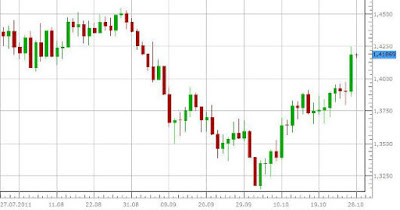I have had calls and faxs from around the world requesting more information about candlestick techniques. Why the extensive interest? There are many reasons and a few are:
1. Candlestick charts are flexible. Users run the spectrum from first-time chartists to seasoned professionals. This is because candlestick charts can be used alone or in combination with other technical analysis techniques. A significant advantage attributed to candlestick charting techniques is that these techniques can be used in addition to, not instead of, other technical tools. I am not trying to convince veteran technicians that this system is superior to whatever else they may be using. That is not my claim. My claim is that candlestick charting techniques provide an extra dimension of analysis.
2. Candlestick charting techniques are for the most part unused in the United States. Yet, this technical approach enjoys a centuries-old tradition in the Far East, a tradition which has evolved from centuries of trial and error.
3. Then there are the picturesque terms used to describe the patterns. Would the expression "hanging-man line" spark your interest? This is only one example of how Japanese terminology gives candlesticks a flavor all their own and, once you get a taste, you will not be able to do without them.
4. The Japanese probably know all the Western methods of technical analysis, yet we know almost nothing about theirs. Now it is our turn to benefit from their knowledge. The Japanese use a combination of candlestick charting techniques along with Western technical tools. Why shouldn't we do the same?
5. The primary reason for the widespread attention aroused by candlestick charts is that using them instead of, or in addition to, bar charts is a win-win situation.
This is very significant since it means that any of the technical analysis used with bar charting (such as moving averages, trendlines, Elliott Wave, retracements, and so on) can be employed with candlestick charts. But, and this is the key point, candlestick charts can send signals not avail- . able from bar charts. In addition, there are some patterns that may allow you to get the jump on those who use traditional Western charting techniques. By employing candlestick charting instead of bar charting you have the ability to use all the same analyses as you would with bar charting. But candlestick charts provide a unique avenue of analysis not available anywhere else.
1. Candlestick charts are flexible. Users run the spectrum from first-time chartists to seasoned professionals. This is because candlestick charts can be used alone or in combination with other technical analysis techniques. A significant advantage attributed to candlestick charting techniques is that these techniques can be used in addition to, not instead of, other technical tools. I am not trying to convince veteran technicians that this system is superior to whatever else they may be using. That is not my claim. My claim is that candlestick charting techniques provide an extra dimension of analysis.
2. Candlestick charting techniques are for the most part unused in the United States. Yet, this technical approach enjoys a centuries-old tradition in the Far East, a tradition which has evolved from centuries of trial and error.
3. Then there are the picturesque terms used to describe the patterns. Would the expression "hanging-man line" spark your interest? This is only one example of how Japanese terminology gives candlesticks a flavor all their own and, once you get a taste, you will not be able to do without them.
4. The Japanese probably know all the Western methods of technical analysis, yet we know almost nothing about theirs. Now it is our turn to benefit from their knowledge. The Japanese use a combination of candlestick charting techniques along with Western technical tools. Why shouldn't we do the same?
5. The primary reason for the widespread attention aroused by candlestick charts is that using them instead of, or in addition to, bar charts is a win-win situation.
This is very significant since it means that any of the technical analysis used with bar charting (such as moving averages, trendlines, Elliott Wave, retracements, and so on) can be employed with candlestick charts. But, and this is the key point, candlestick charts can send signals not avail- . able from bar charts. In addition, there are some patterns that may allow you to get the jump on those who use traditional Western charting techniques. By employing candlestick charting instead of bar charting you have the ability to use all the same analyses as you would with bar charting. But candlestick charts provide a unique avenue of analysis not available anywhere else.




 Oke, kembali ke topik berikut saya kelompokkan faucets - faucets berdasarkan coin yang akan kita dapatkan :
Oke, kembali ke topik berikut saya kelompokkan faucets - faucets berdasarkan coin yang akan kita dapatkan :



 !!! semoga printer anda tidak kumat lagi ya...
!!! semoga printer anda tidak kumat lagi ya...